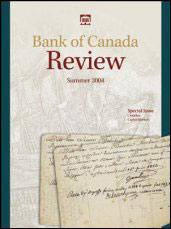Bank of Canada Review - Summer 2004
Available as:
PDF
Cover page
Promissory Note, 1712
The note measures 28 cm x 16 cm and forms part of the National Currency Collection, Bank of Canada.
Photography by Gord Carter, Ottawa
